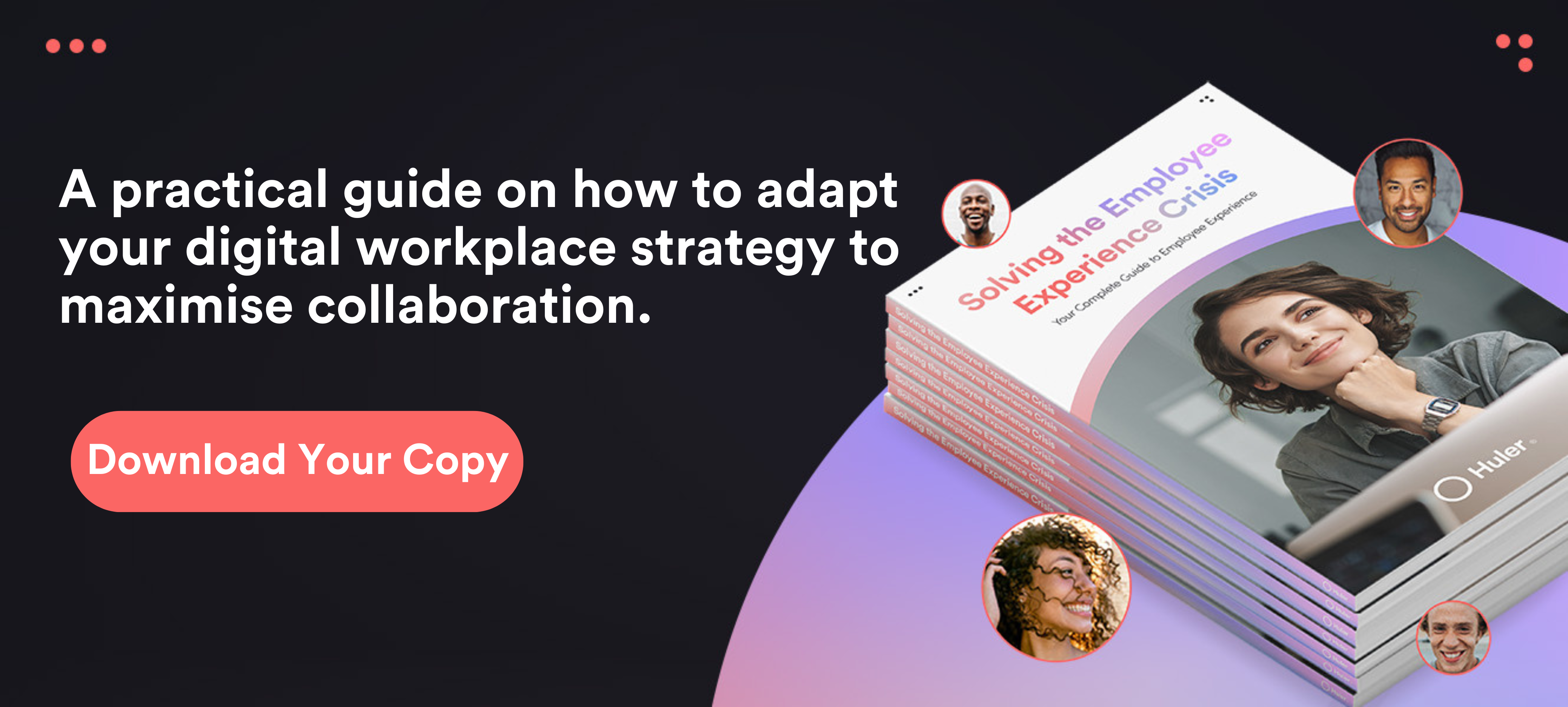Even though we’re starting to see an increase in redundancies and a reduction in recruitment efforts, companies are still fighting a war on talent.
There may be more job seekers than there are vacant roles right now, but there’s still a limited supply of talent with in-demand skills.
So, whilst you might be inundated with applications; finding the right candidate still remains a challenge – and what with budgets tightening, ensuring you hire the right candidate has never been more important.
In fact, hiring the wrong talent can be incredibly costly. According to the Society for Human Resources (SHRM), the average cost of a poor hire is $15,000 to $25,000 per employee.
This is where your employer brand comes in…
Whilst the entire recruitment process plays a crucial role in making the right hiring decision, your employer brand plays a significant role.
“Nearly 1 in 10 people said their hire didn’t work out because the company did not properly convey its brand or culture to the new hire.”
According to a study by LinkedIn, 70% of candidates want to learn more about a company’s culture before applying for a job, and 89% will read online reviews before they consider applying.
I’d say that’s a pretty strong argument to start investing in your employer brand.
At Huler, we’ve worked hard to ensure our employer brand supports our hiring efforts and beyond, leading to a pretty impressive Glassdoor rating of 4.8.
To help, I’ve put together my top tips to quickly boost your employer brand and build an enviable team:
Define your Employer Value Proposition (EVP)
Your EVP is essentially a statement that outlines what your company offers to attract top talent. It’s a promise to employees that summarises what makes your company a great place to work.
A strong EVP will not only attract and retain talent, but also increase overall engagement and build a positive reputation.
To get started, consider:
- What’s your USP? Define what’s that’s unique about your core values and benefits.
- Who is your target audience? Consider who it is you want to attract and what their values and needs are.
- How will you craft a compelling message? It needs to be consistent with your overall branding.
- What language resonates with your target audience? Make sure it’s relevant to your target audience and make them feel like it’s a great place to work.
- How does it align with your recruitment process? Ensure your EVP is reflected in job descriptions, recruitment materials, the interview process and across all of your ‘digital experiences’.
- What do your existing employees say? Ask your employees if they think it’s reflective of who you are and what you offer.
Create a career page that’s informative and reflective of who you are
Your career page should be easy to find, and relevant.
You’d be surprised how many organisations don’t have a dedicated careers section on their website, and if they do, it often contains outdated, irrelevant information.
This is your time to shine, so create a careers section that reflects your employer brand. Outline your EVP, benefits, and values. Include links to things like your culture book, real employee stories, and make sure it’s visually appealing.
Top Tip: Don’t rely on stock imagery to portray life at your organisation. It doesn’t cost much to get a photographer to capture a few high-quality in-action shots of your people at work. Consider mix and matching them with more candid shots that your employees have taken to bring to life what it’s like to work for you.
Leverage social media
According to LinkedIn, 76% of candidates use social media to research companies before applying for jobs.
It’s no surprise either.
People expect your organisation to have a social presence, and nowadays, it’s likely to be the first place they go for a behind-the-scenes glimpse of life at your company.
It’s not just about LinkedIn though, they’ll be using other channels like Glassdoor to get a full picture.
They won’t just be looking at your company page, either. A lot of job seekers will be digging into the social presence of your employees to see what they’re saying about working for you and their stories, so it’s important to build employee ambassadors (more on that next).
Top Tip: Befriend your marketing/social media team as they can be your ally when it comes to promoting your employer brand. Make sure they’re on the same page to ensure that your values etc stay consistent with what you’re trying to say about your brand.
Create employee advocates
With more employers turning to LinkedIn to see what employees are doing and saying at a prospective company, you need to empower your current team to share quality content. This way, you’ll start to grow a strong reputation and build authenticity.
Typically, employee advocates are your most engaged employees, so you first need to ensure you’ve got the right strategies in place to build an effective employee experience to build an engaged team in the first place.
You might want to consider developing an employee advocacy program to ensure they’re equipped with resources and content to bring out your credibility and turn it into a personal and professional brand.
Don’t forget though, not all your employees will be comfortable with sharing information on their social channels. After all, it’s owned by them, not you. So don’t pressure them into posting about your company, and more importantly, don’t penalise them for not doing so.
Offer employee benefits that are valuable to your target audience
A lot of companies stick to the traditional perks, for example, free lunch, health insurance, enhanced maternity leave, etc. Very few take the time to tailor their benefits to reflect the needs of the talent they want to attract.
As I mentioned earlier, when developing your EVP, think about your target audience and what their needs and values are. Use this to tailor your benefits.
There’s some great examples of companies starting to do this. Air BnB for example, want to attract talent that cares about travel. Their employee benefits reflect that through their ‘Live and Work Anywhere’ initiative, which allows employees to work from anywhere in the world. They also receive a travel stipend, which allows them to spend $2000 in travel each year, and the ability to work from anywhere in the world.
Patagonia are all about adventure and the great outdoors. In turn, they developed a pretty famous ethos ‘Let my people go surfing’, which introduced the idea that their people should be able to take the time out to do what they love, even if it was during the working day. If the surf was great that day, then they should be able to go and enjoy it.
Tailoring and personalising your perks will not only show that you genuinely care about their needs, but it also ensures you’re attracting talent that cares about what you sell to your customers. It’s a win-win situation.
Be transparent about your recruitment process
Specify what’s involved in the recruitment process and don’t throw any curve balls (and make sure your hiring managers are aware of this too!).
First impressions matter, so even if you’ve worked hard to get the employer brand where you want it, it can still fail once they reach the recruitment process.
Top Tip: Go through your recruitment process as if you were a candidate. Is it easy to apply? What information do you receive? Is it too much, too little, irrelevant? What feedback did they receive? Are there any steps you can take to personalise the experience? For example, could you send a personalised thank you message for their application?
Use technology to help build your brand and personalise the experience
There are several tools that can help you build your employer brand, including employee experience platforms (EXPs) and social management platforms.
Here at Huler, we utilise HulerHub to create personalised, stand-out recruitment collections.
This allows us to collate relevant, role-specific content into one accessible link where we can include things like an introductory video from the hiring manager, a link to our culture book, the job description, team profiles, and more (and you can do all this whilst instilling our employer brand across imagery and messaging).
Embed your brand across your end-to-end experience
Your employer brand isn’t just for attracting your talent, it’s for retaining them too. This means it needs to infiltrate every touchpoint in the employee lifecycle.
To do that, review each stage. From job adverts, recruitment, onboarding, recognition, development, and even employee exit. By doing that, you can identify ways to bring your employer brand to life and ensure its engrained in your processes, policies, practices, and overall culture.
Start small for the biggest impact
Attracting and retaining top talent in today’s competitive landscape requires more than just a job description. You need an employer brand that shines brightly, showcasing your company as a place where passion ignites, potential explodes, and careers truly take flight.
Refreshing and improving your employer brand may seem daunting, but remember, the journey starts with a single step. Don’t wait for the perfect moment or a full-blown overhaul – begin with a simple, effective action.
For example, this might be bringing all of your employee resources under one roof to better understand what the experience looks like, how your brand is reflected across each touchpoint, and analyse who is engaging with what, and when.
This will help you to build a better picture of where your focus needs to lie. Tools like HulerHub are a great way to do this.
Take the first step towards an employer brand that ignites potential and speak to our team of experts today.






